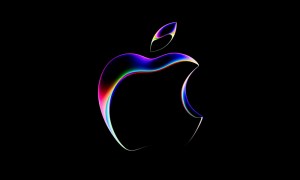
At WWDC 2022, Apple said it’s starting “a new day” for gaming on Mac. That starts with two key new features that should help improve performance on Apple’s devices — most of which don’t have a discrete GPU — and a new application programming interface (API) that brings faster loading times to games. But will it work?
It’s no secret that Mac gaming isn’t where it should be. Even the list of best Mac games are missing several key titles, and most Apple devices aren’t configured or tuned to offer high performance in the latest AAA games. But Apple hasn’t been resting on its laurels, and its lineup of new processors, modern gaming features, and broader game support could push Mac gaming over the edge.
Two major developments

Outside of the new MacBook Air M2, there were two major gaming announcements coming out of WWDC: MetalFX Upscaling and the Fast Resource Loading API. Apple was light on details as usual, but MetalFX Upscaling sounds like an upscaling feature in the vein of Nvidia’s Deep Learning Super Sampling (DLSS). In short, it boosts gaming performance by rendering the game at a lower resolution before upscaling to your monitor’s resolution. That increases performance while maintaining as much image quality as possible.
We don’t know much about the new Fast Resource Loading API, which is said to bring faster game loading times to games. This is likely similar to Microsoft’s DirectStorage and AMD’s Smart Access Storage, which leverage GPU file decompression to get loading times as low as 1 second. Apple says it “minimizes wait time by providing a more direct path from storage to the GPU.”
Those new features are exciting for developers, but Apple also mustered a few game announcements. It said that No Man’s Sky, Grid Legends, and Resident Evil Village will be coming to Mac this year. In the case of No Man’s Sky, it’s actually coming to iPad and Mac, and it will be the first title to support MetalFX Upscaling.
Games meet performance

Game support is the largest thing holding Mac gaming back, but Apple shows it’s set up to broaden support over the coming months. The M1 family and recently announced Apple M2 are the first devices that fit Apple’s design goals of efficiency in everyday use while packing in a gaming-capable GPU. The M1 Ultra may not be as fast as an RTX 3090, but the fact that it’s even close is a testament to how powerful Apple’s silicon really is.
Of course, the M1 Ultra is an ultrafast processor in the expensive Mac Studio. And based on our testing of the MacBook Air M1, the base chips aren’t ideal for gaming (even if they bring new performance levels for Apple). That’s where MetalFX Upscaling comes in, which is the linchpin for Apple’s new gaming push.
A consistent gaming experience

A consistent experience is clearly important to Apple, which is why the company rarely splits hairs on specs when it comes to running different software. That doesn’t work for games, where titles like Resident Evil Village will certainly struggle to run on a low-spec MacBook Air (despite Apple’s claims). MetalFX Upscaling levels the playing field.
We don’t know how it works under the hood, but Apple says it applies resolution scaling and temporal anti-aliasing. It’s likely similar to Temporal Super Resolution (TSR), which is massive for Mac games. We’ve already seen TSR in Ghostwire Tokyo, and it can more than double frame rates while maintaining excellent image quality.
When showing off Resident Evil Village, Capcom manager Masaru Ijuin demonstrating the game running on everything from the MacBook Air to the Mac Studio, further emphasizing Apple’s commitment to a consistent experience across devices. This is a game that shouldn’t be able to run well on the M1, but MetalFX Upscaling enables it to, at least based on what Apple says.
At the end of the day, though, the success of Mac gaming comes down to how many games are actually supported. Apple is making a push, and its family of processors and modern gaming features set Macs up for success. But this will need to be a sustained effort — one where Apple continues to seek out new ways to cater to an audience that’s ignored its products for decades.




